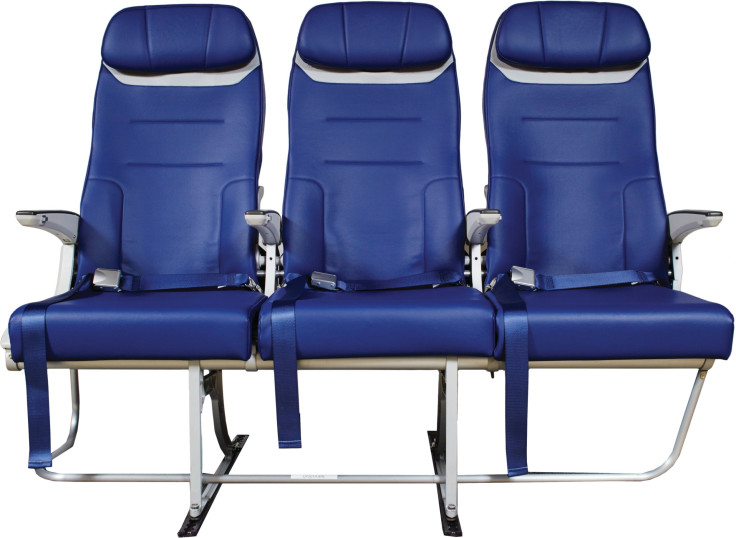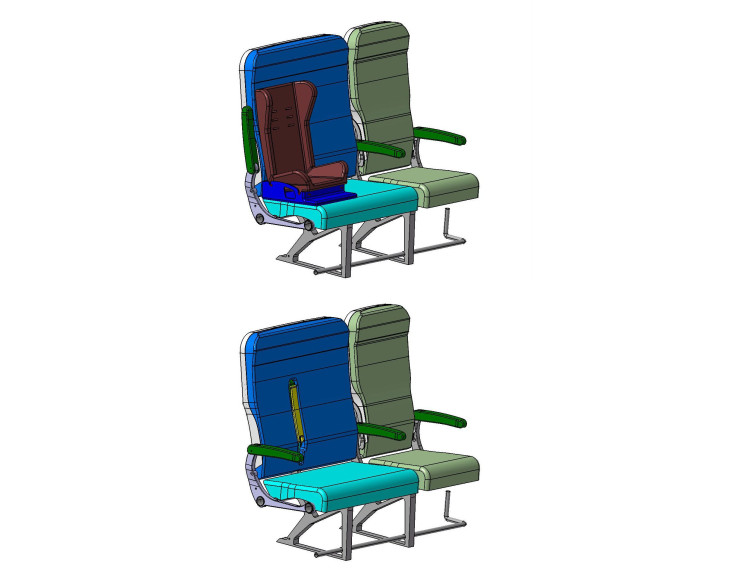The Economy Class Airline Seat: Here's What's New

It’s been a busy week for the little old airline seat, which, by all accounts, has been steadily shrinking over the past few decades. (The seats in economy class, of course. Their premium class counterparts are getting better and more luxurious, for those who can afford them.)
On Tuesday, the Department of Transportation convened its consumer advocacy group to discuss the safety and health concerns raised by cramming more (and thereby smaller) seats into economy class. Seat pitch -- the distance between one point on a seat to the same point on the seat in the next row -- has been shrinking, from about 32 inches to around 30 inches today. That can pose a safety threat, representatives from flight attendant unions have argued.
The Federal Aviation Administration conducts safety tests on how quickly passengers could evacuate a plane in an emergency. The tests are based on planes with 31 inches of seat pitch between airplane rows. But because pitch on many planes measures less than that, evacuation in an emergency could be more difficult.
On the same day, Southwest Airlines announced some good news for its passengers: The carrier is adding almost an inch of width to the seats on its 737 planes. According to Southwest, the new 17.8-inch wide seats will be the widest 737 seat of any U.S. airline. (That will make the aisle smaller, though.)

In addition to extra width, the new seats -- which the airline will roll out in 2016 -- will also boast an adjustable headrest and increased legroom and more personal stowage. The seat pitch, however, will not change from its current state of 32 inches.
Of course, that’s where the good news ends. Southwest’s move is a rare one at a time when most airlines and aircraft manufacturers are doing the opposite. In fact, French jet manufacturer Airbus announced that it would offer its A380, the largest commercial plane in the world, with a configuration of 11-abreast seats in economy, up from the typical 10-abreast configuration, reports Aviation Week.

The new plans would add an extra seat to the middle row, resulting in a 3-5-3 configuration. According to Airbus, the new configuration would still allow for 18-inch-wide seats. Still, many have raised concerns about the seats being uncomfortably close to one another. And as RunwayGirl Network notes, Airbus has also slashed armrest width, trimmed aisles and jammed “window seats up against the wall so far that they overhang six inches above the start of the curved sidewall.”
And since the plane’s average capacity will jump from 525 passengers to 544, that means longer lines for the lavatories and less overhead space for all. Airbus said it sees potential for growth with the newly configured planes in the “budget economy” section.
The problem with the 3-5-3 A380 layout, as demonstrated by @AirlineFlyer. #paxex #AIX15 pic.twitter.com/iXkvbKpGM2
— John Walton (@thatjohn) April 14, 2015But not all the “innovations” in airline seating are bad. At the Crystal Cabin Awards this week in Germany -- known as the Cabin Oscars -- a new design called the SANTO seat was recognized as a positive innovation in passenger comfort. “SANTO” stands for “Special Accommodation Needs for Toddlers and Overweight Passengers” and is the name of a special seat that is 1.5 times the width of a normal one. It would be located at the back of the aircraft cabin, where the fuselage narrows, and can accommodate overweight passengers or travelers with small children. According to its designers, the seat is safer for such passengers and solves the problem that some airlines are facing with overweight travelers.

© Copyright IBTimes 2024. All rights reserved.





















